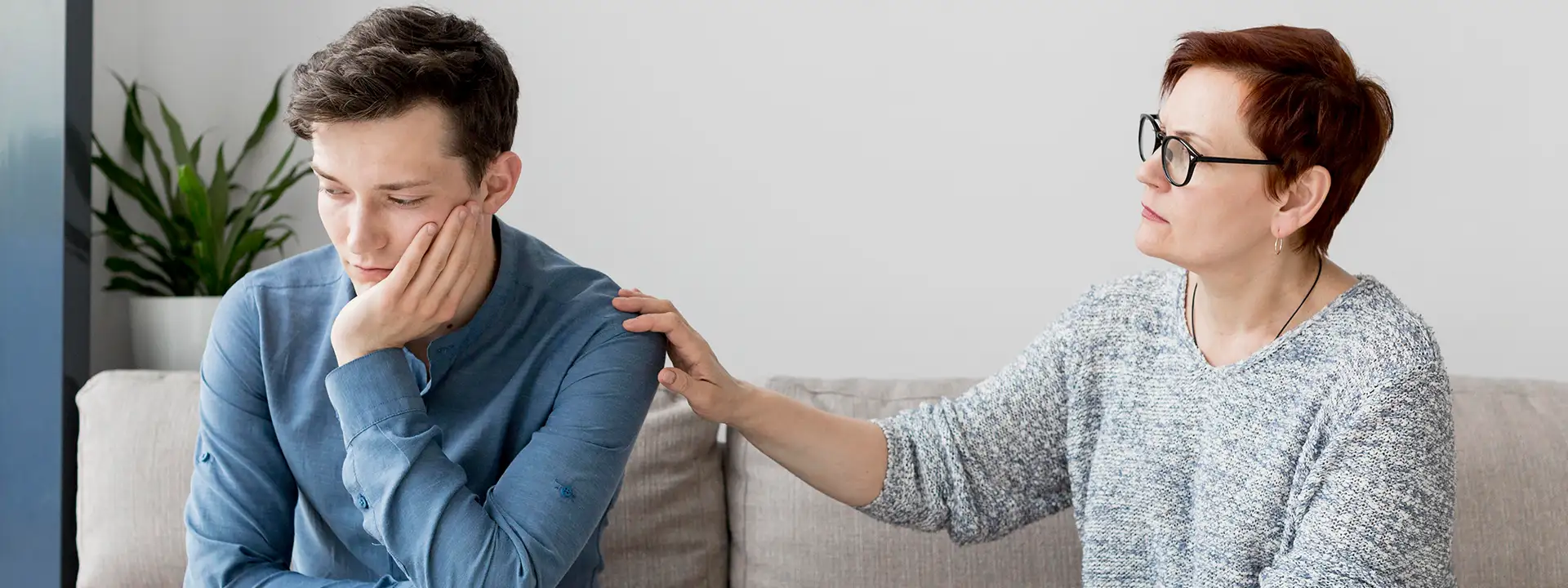The coffee shop smelled like cinnamon and fresh muffins. Mia sat by the window, typing an email for work. Her smile stayed fixed, even when her phone buzzed with a text that made her chest tighten.
She typed back a cheerful reply. Her co-workers thought she was “calm under pressure.” What they didn’t see was the storm in her mind—every word overanalyzed, every pause replayed like a broken record.
Later, in the quiet of her apartment, the smile fell. Her hands shook. She thought about an argument from weeks ago, blaming herself for every word. She wanted to cry, but no tears came. She just felt empty.
For years, she thought she was “too sensitive” or “bad at relationships.” She didn’t know there was a name for what she felt. Until her therapist said, “Have you heard of quiet BPD?”
What Is Quiet BPD?
Quiet BPD, or quiet borderline personality disorder, is a form of BPD where the struggles are turned inward. Instead of showing anger outwardly, people hide it or turn it against themselves.
Arlin Cuncic from Very Well Mind explains that people with quiet BPD may have deep fears of being left, intense emotions, and unstable self-image, but they often keep it hidden from others.
It can make quiet BPD harder to notice. Friends may see someone who is shy, kind, or easygoing. Inside, the person may be dealing with shame, anxiety, or self-blame.
Mia realized this explained why she felt like she was “falling apart” alone, but seemed “fine” to everyone else.
How Quiet BPD Looks Different from Classic BPD
Quiet BPD shares the same core traits as classic BPD—fear of abandonment, unstable relationships, strong mood swings—but the signs are more hidden.
Imi Lo MA, from Psychology Today, agrees that people with quiet BPD are more likely to withdraw, shut down, or blame themselves instead of lashing out. Some signs include:
- Feeling intense anger but not showing it
- Cutting off relationships suddenly, without explaining
- Overthinking social interactions for hours or days
- Avoiding conflict at all costs
- Feeling numb or empty
Mia thought she was “peaceful” because she didn’t yell or argue. But her therapist helped her see that the anger and hurt didn’t disappear—it just stayed inside.
Why Quiet BPD Is Hard to Spot
Quiet BPD can fly under the radar for years.
A useful article by Naomi Carr from Mental Health shows that people with quiet BPD often mask their distress, making it harder for professionals—and loved ones—to recognize it (source).
This masking can come from fear of judgment, past trauma, or the belief that showing emotions will drive people away.
Mia’s friends often said, “You’re the most chill person I know.” She took pride in that. But at night, her mind raced, replaying conversations and imagining what people thought of her.
How Is Quiet BPD Diagnosed?
There’s no special test for quiet BPD—it’s diagnosed using the same DSM-5-TR criteria for BPD. The difference lies in how the traits show up.
A peer-reviewed study by Gregor Hasler and colleagues found that the diagnosis involves structured interviews, self-report questionnaires, and a detailed history of symptoms.
Therapists may ask:
- How do you handle anger?
- Do you blame yourself when things go wrong?
- Do you avoid people when you feel hurt?
- Do you have patterns of intense but unstable relationships?
For Mia, answering these questions felt like someone was finally “connecting the dots” of her life.
Treatment Options for Quiet BPD
Treatment for quiet BPD often includes:
- Dialectical Behavior Therapy (DBT): Teaches coping skills for emotion regulation.
- Schema Therapy: Helps change deep beliefs about self and relationships.
- Cognitive Behavioral Therapy (CBT): Focuses on identifying and changing unhelpful thought patterns.
May et al. (2016) found that DBT remains the most effective treatment for BPD, including quiet forms.
Mia started DBT. She learned to notice her emotions early, use grounding skills, and replace self-blame with self-compassion.
Living with Quiet BPD
Living with quiet BPD means balancing inner struggles with the desire to connect.
Kristeen Cherney agrees that support networks, therapy, and self-awareness help people manage symptoms and build healthier relationships.
Mia started telling close friends about her diagnosis. She explained that if she pulled away, it wasn’t because she didn’t care—it was because she felt overwhelmed. To her surprise, they responded with kindness.
From Silence to Support—Why the Right Help Matters
Mia’s story shows that quiet BPD is not “less real” or “less serious” than other forms of BPD. It just hides behind a calm surface.
Key takeaways:
- Quiet BPD is BPD turned inward—anger, fear, and hurt stay hidden.
- Diagnosis uses the same criteria as classic BPD, but professionals must look for subtler signs.
- DBT, schema therapy, and CBT are proven treatments.
- Sharing your struggles with trusted people can build understanding and support.
At Alter Behavioral Health, our team specializes in personality disorders, including quiet BPD. We use evidence-based therapies and a compassionate approach to help you understand your emotions, heal past wounds, and build a life that works for you.
If you’ve seen yourself in Mia’s story, don’t keep the storm inside. Call us today to start your journey toward clarity and peace.
FAQs
Q1: What is quiet BPD?
It’s a form of borderline personality disorder where emotions are hidden and turned inward instead of shown outward.
Q2: Is quiet BPD officially recognized?
Yes, it’s part of the BPD diagnosis in the DSM-5-TR.
Q3: How is quiet BPD different from classic BPD?
The core traits are the same, but people with quiet BPD hide their emotions and may withdraw instead of acting out.
Q4: Can quiet BPD be cured?
There’s no “cure,” but therapy can greatly reduce symptoms and improve quality of life.
Q5: What causes quiet BPD?
It can come from genetics, trauma, or early life experiences.
Q6: How do therapists treat quiet BPD?
With evidence-based therapies like DBT, schema therapy, and CBT.
Q7: How long does treatment take?
It varies. Some people see progress in months; others need longer-term care.
Q8: Can quiet BPD lead to depression?
Yes, many people also experience depression or anxiety.
Q9: Should I tell my friends about my diagnosis?
Only if you feel safe, it can help them understand your behavior.Q10: Where can I get help?
Start by talking to a mental health professional or calling a clinic like Alter Behavioral Health.



